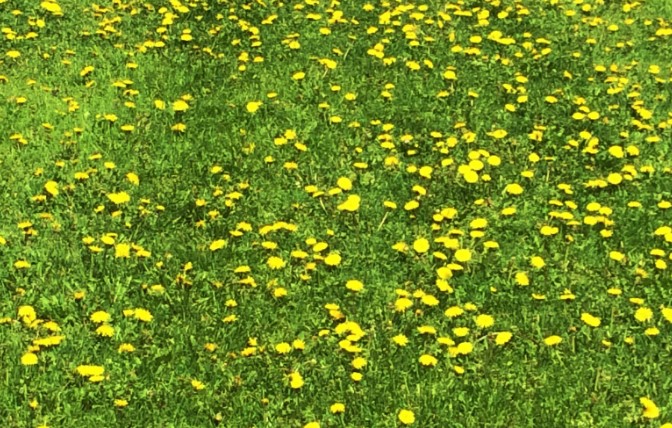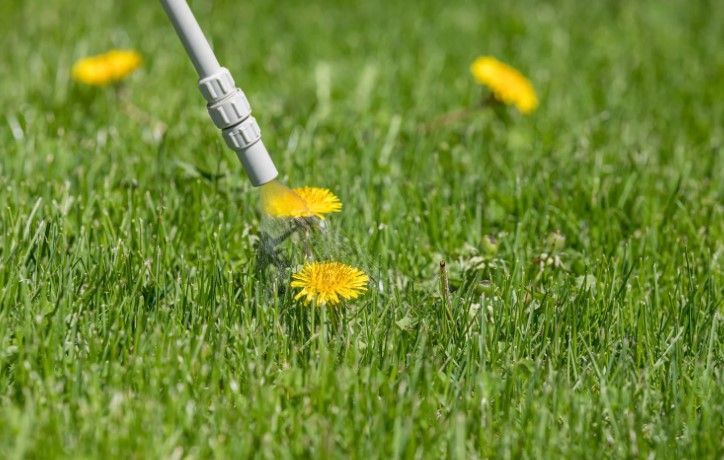- Why Do Dandelions Keep Coming Back in My Lawn?
- How Can I Kill Dandelions Without Damaging My Grass?
- Best Dandelion Killer That Won’t Kill Grass (UK Options)
- How Do I Apply Dandelion Killer Effectively?
- Maintaining a Dandelion-Free Lawn: What Works for Me
- Conclusion: What Worked Best in My Garden
- FAQs on Best Dandelion Killer That Won’t Kill Grass
I’ve always loved a lush, green lawn — but like many UK homeowners, I’ve battled with one stubborn invader: the dandelion.
No matter how often I mowed or weeded by hand, they kept popping back up. I knew I needed a best dandelion killer that won’t kill grass, and after testing multiple options, I’ve finally found what works.
In this guide, I’ll walk you through what I’ve learned about dandelion control, which products I recommend, and how to keep your lawn healthy without damaging it in the process.
Why Do Dandelions Keep Coming Back in My Lawn?
What Makes Dandelions So Persistent?
Dandelions are tough. Their long taproots can reach over 15cm deep, which means even if I remove the top, the plant can regrow. And because they reproduce by both seed and root, it doesn’t take long before one becomes many.
They thrive in bare or thin patches of lawn — and before I knew it, they were everywhere.
Is It Bad to Have Dandelions in My Garden?
Some gardeners say dandelions are harmless or even good for pollinators. While I appreciate their place in the ecosystem, they can quickly dominate a lawn and compete with grass for nutrients. For me, maintaining a tidy garden means keeping them under control — but doing so without harming my lawn.
How Can I Kill Dandelions Without Damaging My Grass?
What Is a Selective Weed Killer?
A selective weed killer targets broadleaf weeds like dandelions while leaving grass unharmed. This is different from non-selective herbicides like glyphosate, which kill everything they touch.
When I first made the mistake of using a general weed killer, I was left with brown patches. Lesson learned — only use selective products on lawns.
When’s the Best Time to Apply Dandelion Killer?
Based on what’s worked for me, the best times are spring (April–May) and early autumn (September) when dandelions are actively growing but before they go to seed.
Here’s a quick reference:
| Region | Best Time to Apply | Why It Works |
| Southern UK | March–May, Sept | Warmer temps, early growth |
| Midlands | April–May, Sept | Active growth season |
| Northern UK | May–June, Sept | Later spring warmth |
Best Dandelion Killer That Won’t Kill Grass (UK Options)
What Are the Top Chemical Options I’ve Tried?
Here are the best selective weed killers I’ve used that really work — and don’t harm the lawn.
Weedol Lawn Weedkiller
Great for large lawns. Starts working within days.
✅ Easy to apply using a watering can
❌ Not pet-safe until dry
Resolva Lawn Weedkiller
Fast results, ideal for spot treatments.
✅ Targets dandelions and clover
❌ Slightly more expensive
Verdone Extra
Classic option with reliable results.
✅ Kills 4 types of weeds
❌ Needs precise mixing
These products are all post-emergent and broadleaf weed control formulas, meaning they go after visible weeds like dandelions without touching the grass.
Are There Any Natural or Pet-Safe Options?
I’ve experimented with glyphosate-free dandelion killers, but natural solutions are tricky on lawns. For example:
- Vinegar and boiling water: Effective but kills grass too
- GreenForce Lawn Weedkiller: Organic, selective formula
- Pet-friendly weed sprays: Safe after drying, but slower acting
If you’ve got children or pets, I recommend applying in the evening, keeping them off the lawn until it’s completely dry.

How Do I Apply Dandelion Killer Effectively?
Should I Use a Spray, Granule, or Gel?
Here’s what I’ve used in different situations:
| Product Type | Best For | My Experience |
| Liquid Spray | Large lawn areas | Fast & even coverage |
| Spot Gel | Isolated weeds | Very precise, no damage |
| Granules | Weed & feed treatments | Slower, good for maintenance |
How Do I Avoid Over-spraying and Damaging My Lawn?
Precision matters. I follow these steps:
- Use a targeted sprayer or gel applicator
- Avoid windy days to prevent drift
- Apply in dry weather but not during heatwaves
- Stick to label instructions — always
Maintaining a Dandelion-Free Lawn: What Works for Me
Can I Prevent Dandelions from Coming Back?
Yes — once I got rid of the dandelions, I started a proper lawn care in spring and autumn routine. That means:
- Regular mowing (but not too short)
- Feeding with nitrogen-rich lawn food
- Overseeding bare patches
Is a Weed and Feed Product Worth It?
Absolutely. I started using them once or twice a year, and they’ve made a big difference.
Here are my go-to combos:
- The EverGreen Complete 4-in-1 – Feeds, kills weeds & strengthens grass
- Miracle-Gro EverGreen Premium Plus – Great for patch repair + weed control

Conclusion: What Worked Best in My Garden
After trying a mix of chemical, natural, and manual methods, I found the best approach is a combination:
- A selective weed killer in spring
- Spot treatment throughout summer
- Weed and feed in autumn
- A bit of patience and consistency
According to me, Weedol Lawn Weedkiller gave the best balance of power, price & grass safety. With regular care and spot spraying, I’ve finally got the lawn I want — dandelion-free and lush.
Related Article: 5 Star Rated Strongest Weed Killer That Kills Everything
FAQs on Best Dandelion Killer That Won’t Kill Grass
1. Do I Need to Pull Dandelions Out by Hand?
It helps — especially if I catch them early. But the root often breaks, so I combine pulling with a spot treatment.
2. Can I Kill Dandelions Without Chemicals?
Only if I don’t mind risking the grass. On hard surfaces, yes. On lawns, it’s safer to use selective weed killers.
3. How Long Does It Take for Dandelion Killer to Work?
Some products show results in 3–7 days, but full die-off can take 2–3 weeks.
4. Is It Safe for Pets and Children After Application?
Yes — once the product has dried. I used to keep pets away from the lawn for 24 hours to be safe.



0 Comments